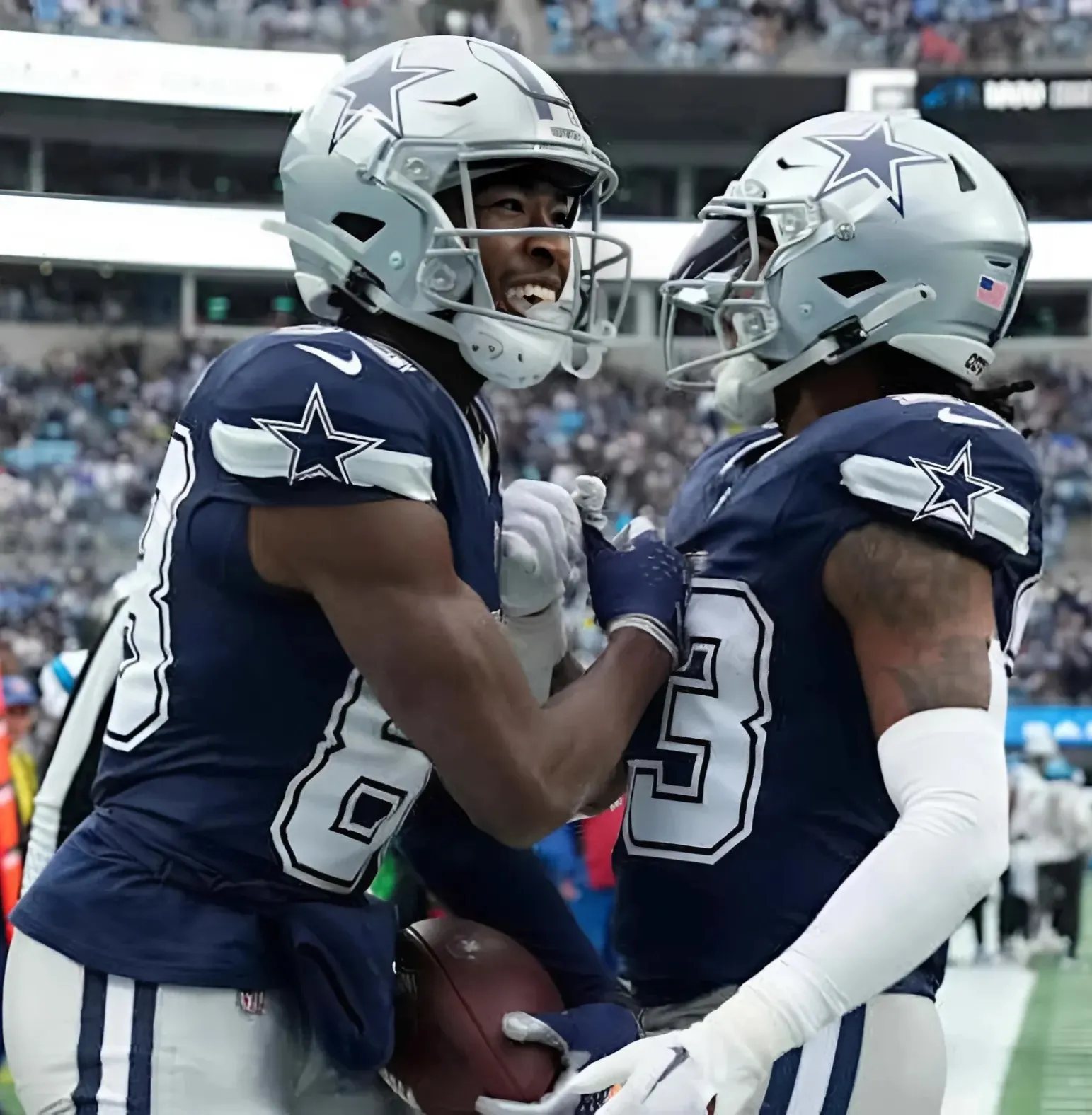
All the questions about the players the Atlanta Falcons will pick and where in the 2025 NFL Draft will start to be answered a week from now. This week, though, The Athletic NFL Draft expert Dane Brugler has given us a sneak peek at how it could shake out.
In fact, Brugler has created a seven-round mock draft for all 32 teams. Today, we’re going to examine his Falcons selections and how they might (or might not) work out.
Round 1, No. 15: Mike Green, edge, Marshall
In our mock draft mailbag, we discussed how everyone is starting to think Green and the Falcons would be a good match, and that was before I saw Dane’s mock draft. Plenty of Atlanta fans would celebrate this pick because they might finally not have to hear the phrase “scheme up a pass rush” again.
That’s been the Falcons’ mantra for the last decade as they have tried and mostly failed to find a dominant pass rusher while maintaining, almost always incorrectly, that they could find ways to generate a pass rush using defensive schemes.
Green, though, is not a player who needs to have his pressures schemed up. The 6-foot-3, 251-pounder led the FBS in sacks last season with 17 and is Brugler’s fourth-ranked edge rusher in this class. Falcons coach Raheem Morris attended Green’s pro day in Huntington, W.Va., where Green posted a 6.85-second three-cone drill (which is faster than any defensive end or linebacker had at the combine) and a 4.25 short shuttle (which would have been the second-fastest at the combine among defensive ends and linebackers). Combine that with an enviable bend around the edge, and Green could be a nightmare for tackles in one-on-one situations.
There are on-field issues that will concern Falcons coaches. Green has an average arm length (32 3/8 inches). He built his stats in the Sun Belt, and he had only one quarterback pressure when he played against Ohio State in 2024. He played in a four-man front in college and likely would be transitioned to a 3-4 outside linebacker in Atlanta. He struggled as a run defender at times at Marshall.
Off the field, Green has faced two sexual assault allegations, although neither led to charges and he has denied all wrongdoing. He also received strong character references from coaches at Virginia and Marshall, according to Brugler.
Round 2, No. 46: Tyleik Williams, DT, Ohio State
I remain skeptical that the Falcons will take a defensive tackle this high because that would suggest last year’s two defensive line picks — second-rounder Ruke Orhorhoro and fourth-rounder Brandon Dorlus — were missed picks. Morris doesn’t seem to think that.
“I’m really excited about those guys,” the coach said in March at the annual league meeting. “You make your biggest jump the second year.”
Orhorhoro and Dorlus both need to make a big jump. Orhorhoro played in eight games last season, sitting out the first four on the inactive list and then missing Weeks 9-13 with an ankle injury. He finished the season with 11 tackles and one quarterback hit while playing 13.3 percent of the defensive snaps (148 overall). Dorlus, who was inactive for 14 of the team’s 17 games, played only 19 snaps and finished with three tackles.
That lack of production could be explained by the fact that the rookies were playing behind more veteran players. Grady Jarrett, David Onyemata, Kentavius Street and Eddie Goldman played the majority of interior defensive line snaps. Jarrett and Goldman are both gone, so in theory, Orhorhoro and Dorlus could step into those two rotation spots.
If the Falcons’ coaching staff really believes they’re ready to do that, there’s no reason to use a first- or second-round pick on a defensive tackle with so many other positions of need on the defense. If Atlanta does draft an interior defensive lineman early, it means that one or both of last year’s tackle picks was a reach. Or worse.
Using this pick on Williams, who is Brugler’s fifth-ranked defensive tackle, would mean Atlanta is expecting him to compete for starting snaps right away.
“Overall, Williams needs further development as a pass rusher, but he is one of the best run-defending linemen in the draft class because of his recognition skills and disciplined execution at deconstructing blocks,” Brugler wrote in “The Beast.” “He has the type of skill set that will be appreciated by NFL coaches.”
Round 4, No. 118: Logan Brown, OT, Kansas
I’ve long been an advocate of the Falcons addressing offensive tackle in the draft, and they have been particularly active in scouting tackles this offseason. If they are thinking about providing immediate competition for right tackle Kaleb McGary, they could use one of their first two picks on a tackle. If they wait until the fourth round as Brugler projects here, then a more realistic goal would be to find a developmental player who could be the swing tackle this season and develop into a replacement for McGary or Jake Matthews down the road.
In terms of developmental tackles, it’d be hard to find a better prototype than Brown. The 6-6, 311-pounder didn’t start playing football until his freshman year of high school and had scholarship offers from Wisconsin, Alabama, Michigan, Ohio State and Penn State by his junior year. He played for the Badgers for four seasons but saw action in only 25 games during that time because of the pandemic, injuries and a redshirt season. He was eventually dismissed from the team for striking another player during practice. (Every offensive line coach in the world either secretly or not so secretly wants at least one player like this in his meeting room, so this is probably not a red flag.) Brown spent his final two college seasons at Kansas, where he was second-team All-Big 12 at right tackle. He is Brugler’s 12th-ranked offensive tackle.
“Brown’s untidy technique and lack of experience lead to balance issues, but he has an interesting combination of size, quickness and natural power that can be developed by NFL coaching,” Brugler wrote in “The Beast.” “He projects as a reserve swing tackle with a path to becoming a starter at some point on his rookie deal.”
Bingo.
Round 7, No. 218: Cobee Bryant, CB, Kansas
If Bryant is available in the seventh round, the Falcons should be thrilled. Every seventh-round draft pick is a dice roll, but there are reasons to believe someone could be getting a steal if Bryant goes this late. Bryant is Brugler’s 25th-ranked cornerback and listed as a sixth-round prospect because the 6-foot, 180-pounder has a very thin frame and hasn’t run under a 4.5 40-yard dash.
There are reasons to be optimistic, though, starting with production. Bryant had 13 interceptions for the Jayhawks, including four in each of his final two seasons. He is described by Brugler as an “elite competitor,” and his strengths would fit well in the Falcons’ zone-heavy secondary.
“Bryant’s decisive (reactions), ball skills and dog mentality are promising ingredients at the position,” Brugler wrote in “The Beast.”
That’s the best anyone can hope for in a seventh-round pick.
Round 7, No. 242: Kyle Monangai, RB, Rutgers
With Bijan Robinson and Tyler Allgeier taking up almost all the carries and Carlos Washington still on the roster, the Falcons don’t need another ball carrier at the moment. That being said, a seventh-round running back probably wouldn’t be counted on to take many, if any, carries. If this is the Falcons’ pick, it would be with special teams in mind, but this is another pick that brings up questions about the 2024 draft for me.
The Falcons selected running back Jase McClellan in the sixth round last year, but he was inactive for 11 games and missed the final four weeks with a knee injury. He finished with 13 carries for 32 yards. My bet is they’ll give him another year of development before adding another running back through the draft.

-1744670615-q80.webp)

-1749183075-q80.webp)